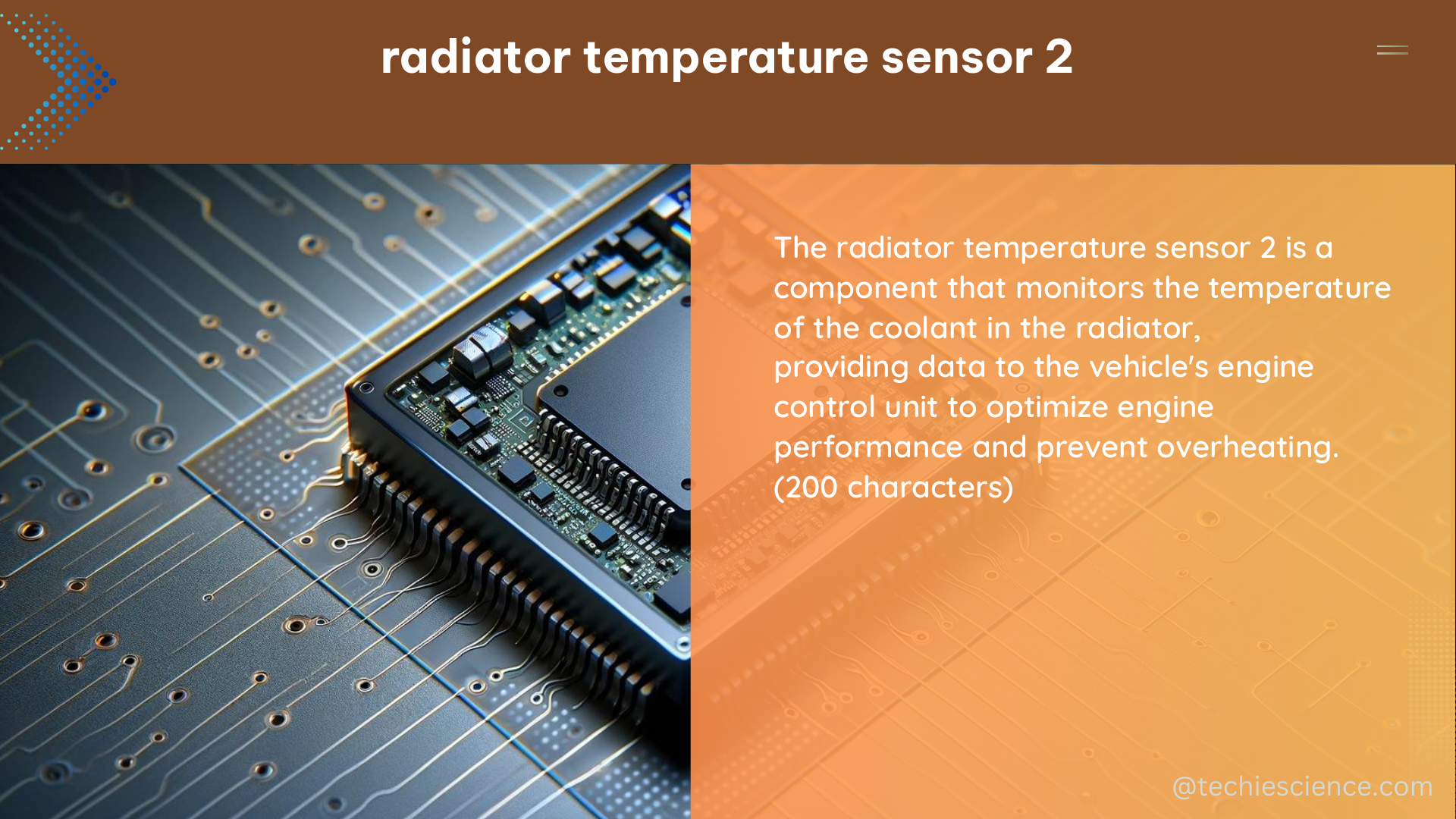The radiator temperature sensor 2, also known as the Engine Coolant Temperature Sensor 2, is a crucial component in modern vehicles that measures the temperature of the engine coolant. This sensor plays a vital role in regulating the engine’s fuel injection, ignition timing, and cooling systems, ensuring optimal performance and preventing overheating.
Understanding the Radiator Temperature Sensor 2
The radiator temperature sensor 2 is typically located near the output of the radiator or in the engine block, providing real-time data to the engine control unit (ECU) about the coolant temperature. This information is essential for the ECU to make adjustments and maintain the engine’s optimal operating temperature.
Technical Specifications
The technical specifications of the radiator temperature sensor 2 can vary depending on the vehicle make and model, but generally, they have the following characteristics:
- Resistance Range: The sensor typically has a resistance range of 1-10 kΩ, which changes based on the coolant temperature.
- Temperature Range: The sensor can measure temperatures ranging from -40°C to 150°C (-40°F to 302°F).
- Response Time: The sensor has a response time of less than 10 seconds, allowing the ECU to quickly detect changes in coolant temperature.
- Time Constant (τ): The sensor’s time constant, which represents the time it takes for the sensor to reach 63.2% of the total step change in temperature, is usually around 1-5 seconds.
Diagnostic Trouble Codes (DTCs)
The P2185 code is the most common diagnostic trouble code associated with the radiator temperature sensor 2. This code indicates a high-temperature condition in the coolant circuit, which can be accompanied by symptoms such as:
- Overheating
- Reduced engine performance
- Activation of the check engine light
Replacing the Radiator Temperature Sensor 2

To replace the radiator temperature sensor 2, follow these steps:
- Locate the Sensor: Identify the location of the sensor in the engine compartment, typically near the output of the radiator or in the engine block.
- Disconnect the Electrical Connector: Carefully disconnect the electrical connector attached to the sensor.
- Disconnect the Coolant Line: If the sensor is located in the coolant line, disconnect the line from the sensor.
- Remove the Sensor: Unscrew the sensor from the engine block or radiator.
- Install the New Sensor: Place the new sensor in the same location, ensuring it is securely fastened.
- Reconnect the Coolant Line: If applicable, reconnect the coolant line to the new sensor.
- Reconnect the Electrical Connector: Attach the electrical connector to the new sensor.
Troubleshooting and Maintenance
To ensure the proper functioning of the radiator temperature sensor 2, consider the following troubleshooting and maintenance tips:
- Inspect for Damage: Regularly check the sensor and its wiring for any signs of damage, such as cracks, corrosion, or loose connections.
- Perform Resistance Tests: Use a multimeter to measure the sensor’s resistance at different temperatures, ensuring it falls within the expected range.
- Monitor Coolant Levels: Maintain the proper coolant level in the system, as low coolant can affect the sensor’s readings and lead to overheating.
- Replace the Sensor Periodically: Follow the manufacturer’s recommended replacement interval for the radiator temperature sensor 2, typically around 60,000-100,000 miles (96,000-160,000 km).
By understanding the technical details and proper maintenance of the radiator temperature sensor 2, you can ensure your vehicle’s cooling system operates efficiently and prevent costly engine damage due to overheating.
References:
- P2185 Coolant Temp Sensor 2 Need Help
- P2185 on my Mark 7 R – Engine Coolant Temp Sens 2 Circuit Hi
- Coolant Temperature Radiator Output Reading
- Difference Between Sensor Response Time and Sensor Time Constant (Tau)

The lambdageeks.com Core SME Team is a group of experienced subject matter experts from diverse scientific and technical fields including Physics, Chemistry, Technology,Electronics & Electrical Engineering, Automotive, Mechanical Engineering. Our team collaborates to create high-quality, well-researched articles on a wide range of science and technology topics for the lambdageeks.com website.
All Our Senior SME are having more than 7 Years of experience in the respective fields . They are either Working Industry Professionals or assocaited With different Universities. Refer Our Authors Page to get to know About our Core SMEs.